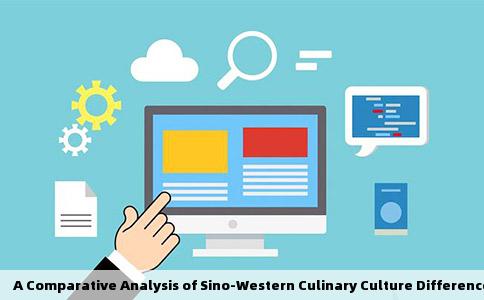A Comparative Analysis of Sino-Western Culinary Culture Differences
- 饮食文化
- 2025-01-04 01:40:01
- 33
In the realm of food and dining, the differences between Chinese and Western cultures are vast and profound. These differences stem from distinct historical, geographical, and cultural backgrounds that have shaped unique culinary traditions and practices. This article will delve into the intricacies of these differences, exploring the origins, cooking methods, ingredient selections, dining etiquette, and overall culinary philosophies of both cultures.
Firstly, the Chinese dietary tradition is deeply rooted in a rich history and philosophy. Chinese cuisine is renowned for its diverse range of flavors, intricate preparation techniques, and use of seasoning. Ingredients are often meticulously chosen to balance each dish''s flavor profile, resulting in a harmonious blend of tastes. Cooking methods such as steaming, braising, and stir-frying are commonplace in Chinese cuisine, which emphasizes the preservation of nutrients and the original flavor of ingredients.
In contrast, Western cuisine is characterized by its use of fresh ingredients, simple cooking techniques, and a focus on preserving the natural flavors of food. Western cooking often involves more direct heat sources like ovens and grills, resulting in distinct flavors and textures. Westerners also tend to prioritize convenience and time-saving measures in their cooking practices.
When it comes to ingredient selection, the Chinese diet is renowned for its extensive use of herbs and spices. Herbs like garlic, ginger, and star anise are commonplace in Chinese cooking, contributing to the complex flavor profiles of dishes. Conversely, Western cooking often relies on a more straightforward set of ingredients like fresh vegetables, fruits, meats, and dairy products. These are used to create a balanced diet that is often supplemented with additional seasoning for taste enhancement.
Dining etiquette is another area where Sino-Western culinary cultures differ significantly. Chinese dining etiquette is highly formal and involves a set of rules and customs that must be followed during a meal. This includes the placement of dishes on the table, the order in which dishes are served, and the proper way to eat with chopsticks. In contrast, Western dining etiquette is more casual and focused on enjoyment during the meal. Table manners involve the use of a knife and fork, and etiquette is generally less stringent than in Chinese dining.

Furthermore, culinary philosophies differ between the two cultures. The Chinese culinary philosophy emphasizes harmony and balance in food preparation. This is reflected in the emphasis on flavor balance, texture contrasts, and the use of various cooking methods to achieve this balance. Western culinary philosophy tends to focus more on individual flavors and textures, with a focus on using fresh ingredients to enhance their natural flavors.
In conclusion, the differences between Sino-Western culinary cultures are vast and multifaceted. These differences stem from distinct historical, geographical, and cultural backgrounds that have shaped unique culinary traditions and practices. Understanding these differences is crucial for bridging cultural gaps and fostering mutual respect and appreciation for each other''s culinary traditions.
















